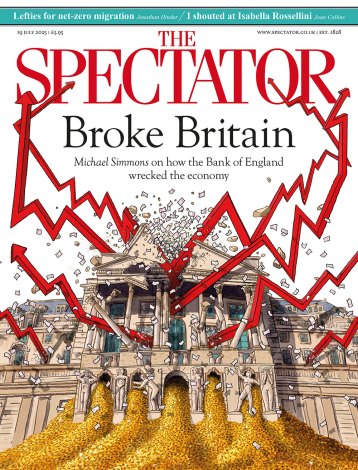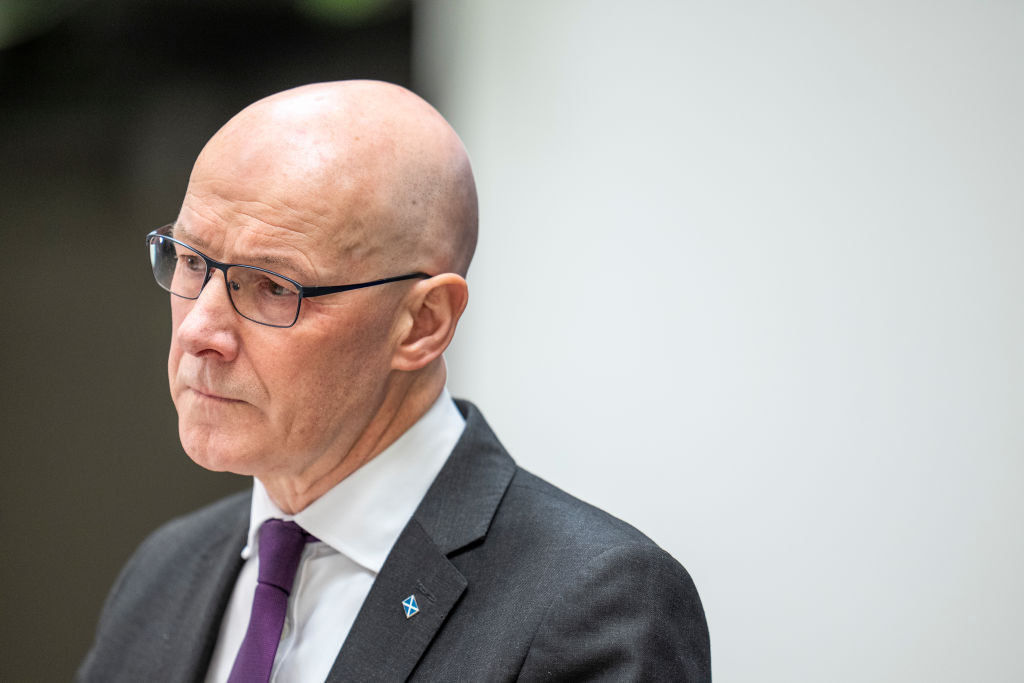Turning around a government that has lost its way is one of the trickiest feats in politics, all the more so if that government has enjoyed a long stretch of incumbency. The big beasts are gone, everyone who’s left is exhausted, the voter coalition is coming apart, and some begin to question the party’s purpose in power. ‘Time for a change’ is no longer just an opposition talking point: even insiders wonder if a spell out of office wouldn’t be for the best. A party veteran or a rising star steps forward, pledging renewal, a fresh direction and a fighting chance come the next election. That was the offer made by James Callaghan in 1976, Gordon Brown in 2007 and Rishi Sunak in 2022. They each failed and their parties went down to significant defeats.
Might John Swinney buck this trend? The SNP leader will have been gratified by a poll putting him on course to win the next Scottish parliament elections, securing for the Nationalists an unprecedented fifth consecutive term in power in Edinburgh. The survey, conducted by FindOutNow for the Sunday Herald, gives the SNP a 12-point lead over Labour in constituency voting intentions and a ten-point lead on the regional list. On the strength of those numbers, the Nats would comfortably be the largest party at Holyrood and able to continue governing as a minority administration or could strike a pact with other parties. This is a very different prospect than that which faced Swinney nine months ago, when he took over the leadership after Humza Yousaf’s short and unhappy sojourn in Bute House. Back then, the SNP was tied with Labour in the constituencies and six points behind in the regionals.
What went right for Swinney? The question ought to be: what went wrong for his opponent, Scottish Labour leader Anas Sarwar? The answer is: Sir Keir Starmer. The Labour government became unpopular quickly, in no small part thanks to its removal of the winter heating allowance, its tax-raising budget, and the costs to consumers of its energy policies. This handed the SNP an opportunity to do what it does best: triangulating populism. It could talk left on fuel poverty and welfare reforms and right on National Insurance hikes and the taxing of family farms. The Nationalists are at their most formidable when they have a story to tell the urban poor, another one for comfortable suburbans, and another still for depopulated rural areas. After several years in which the party became stuck down an ideological rabbit hole of gender theory, rent controls, job-killing Net Zeroism, and seven-year prison sentences for hate crimes, the SNP has edged its way back towards the centre ground. They’re still wrong, but at least now they’re wrong about stuff the voters can understand.
Not so long ago, Sarwar looked like Labour’s best shot at regaining control of Holyrood, which the party lost in 2007. The Prime Minister and the Chancellor appear to have put paid to that. If voters in Scotland want to give Labour a bloody nose, the 2026 elections are a prime opportunity. Notable, too, is the rise of Reform. While it does not enjoy the same level of support as seen in England, Nigel Farage’s party is doing better than the Scottish establishment ever imagined. I hate to say I told them so – wait, that’s not true. I love to say I told them so. While Reform is doing most of its damage to the Tories, there is a not insignificant segment of the Labour vote who have migrated towards it.
Swinney is an implacable separatist and nationalist demagogue, but he has learned to repackage these impulses in terms more palatable
It would be churlish to deny that Swinney has made a contribution to the uptick in the SNP’s chances. He has not simply waited for Labour to unravel, but has done the work to get his party back to the mainstream and some degree of credibility. He is a more moderate, reassuring figurehead than the hyper-political Sturgeon and Yousaf, who allowed activists and fringe ideas to dominate their agendas and seemed to lose the ability to address anyone to their right, which, unfortunately, was most of the country.
Truth be told, Swinney is an implacable separatist and nationalist demagogue, but he has learned to repackage these impulses in terms more palatable to to the average voter. He has cultivated the public image of ‘Honest John’, a dull but decent bank manager type, and the voters appear to buy it. In this venture, he has been ably assisted by his deputy Kate Forbes. She is the church-going pro-business moderate who was reviled by the Scottish press and internal SNP opponents alike when she contested the leadership in 2023. Her evangelical Christian faith became the central issue in the campaign, in particular her views on premarital sex, same-sex marriage and abortion, and the membership handed Yousaf a narrow victory, a decision they came to regret. Arguably, Swinney’s masterstroke was bringing Forbes back in from the cold, handing her the economy brief, and sending her to repair relationships with the business community. SNP members have Sir Keir Starmer to thank for their party’s revival but they also owe a debt to Swinney and Forbes.
All this is infuriating for the SNP’s opponents and critics. Eighteen years in government, wielding the vast array of powers given to the Scottish parliament, and the Nationalist record on health, education, growth, climate, drugs and transport is unspeakably grim. If Scotland had simply had no government for the past two decades, there is a decent chance it would be in a better position than it is under the ministrations of the SNP. It isn’t fair. In a healthy democracy, the Nationalists would be facing electoral oblivion for their sins, but democracy isn’t about fairness. It’s about power: winning it, using it, retaining it, and keeping it out of the hands of your opponents. Absent a significant reversal of fortune, the SNP is on course to cling onto power for another five years and John Swinney to deliver the midterm turnaround that eludes so many political leaders.







Comments